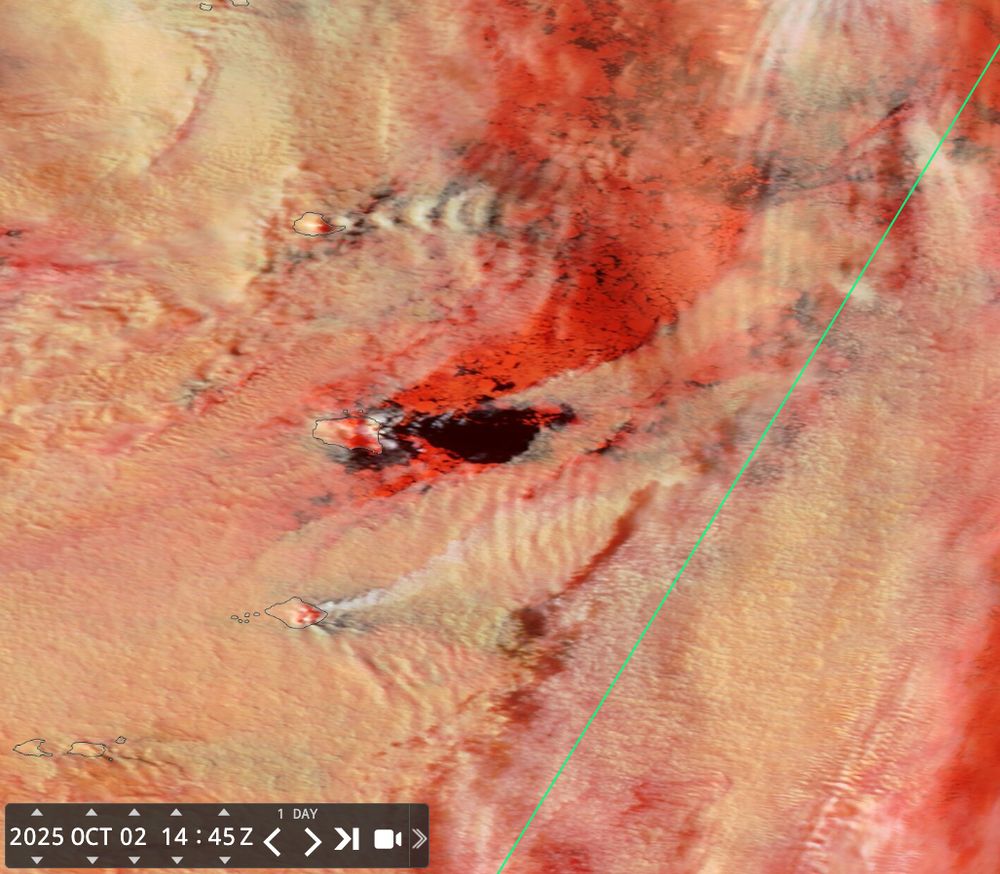Aerosol deposition underestimated over the global ocean
www.nature.com/articles/s41...
@solas-ipo.bsky.social @usocb.bsky.social
Really good background info of u r interested in optical #polarization .
#physics @drskyskull.bsky.social

This morning in central Patagonia, #highlatitudedust activity.

Reposted by Santiago Gassó, Rosemary A. Joyce, Dawn J. Wright
🧪 #SciComm 🌍

Yesterday in Central Argentina, #dust and #smoke mixed because coincident & different air masses. Winds from the W went over the Andes and fanned fires in the Cordoba province hills. Smoke remain relatively high. Same time a lower cold front from the south lifted dust plumes (brownish).

Reposted by Santiago Gassó
(1/2)🧵
Milan’s poor air quality stems from its spot in Italy’s Po Valley, wedged between the Alps & Apennines. The fertile plains host dense industry & farms, producing 35% of Italy’s crops plus bricks & tiles — but also major emissions.🚜🏭🔥 #MilanSmog




By sunset over Patagonia today, copious amount of #highlatitudedust was being injected in the southern Atlantic region.

This morning #highlatitudedust in central Patagonia, copious amounts are reaching the city of Comodoro Rivadavia , where webcams show significant visibility decrease.




6/6


In this case, there are much fewer retrievals, because each pixel is a bit too big and it captures the plume & clear sky nearby resulting in smaller observed reflectance. This results in lower AOD 5/n


Each individual plume is well resolved and there is a clear sharp contrast in AOD between center of plume and outside.
4/n


so let's look at this example in more detail... 3/n


Streaks of #highlatitudedust emitted in southern #Iceland.
This example illustrates an important fact about using polar sensors to detect pollution (dust in this case) and sensor spatial resolution.
1/n

A lot of pollution this morning in northern #Italia.
Satellite detected optical depths (a proxy for particulate concentration) from the MODIS sensor indicates high values, consistent with very high PM presence.


Reposted by Santiago Gassó
GEOMAR is hiring a Scientist/Postdoc (18 months, full time) to support the operation & expansion of the MEMENTO database within the EU project BioGeoSea 🌊🔬
🗓️ Apply by 19 Oct 2025
🔗 www.geomar.de/en/karriere/...
#JobAlert #OceanScience #Research #GEOMAR #BioGeoSea
A #volcanotrack in Bristol island in the S. Atlantic. It is rare to see activity in this 🌋. Frankly I do not recall ever seeing it active (I have been making obs in this area +15yrs). It appears that activity lasted about 2 days.
Emissions remain low in altitude & wrap up w/orographic wave.



I was not aware of the presence of such aerosol type in será where my default has been mostly dust and sometimes mixed with dust.
More #highlatitudedust yesterday this time in the northern hemisphere, in Greenland.
This MODIS Terra image does not clearly show source, probably because dust emission ended before the satellite overpass . GOES image shows that it was active during sunrise and before Terra overpass.



glacier in motion as seen from space , 9 year animation.
Reposted by Santiago Gassó, Peter Thorne
Reposted by Santiago Gassó

Another all day cloudy in Patagonia, where lake Coluhe Huapi (next to Sarmiento in image) was active all day. This time there is no satellite view to confirm but at least there are some surface webcams that can confirm. Note there is more #highlatitudedust in suspension than yesterday.



